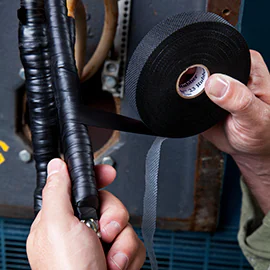The Importance and Versatility of Waterproof Rubber Strips
In today’s world, where moisture and water-related issues plague many industries, waterproof rubber strips have emerged as a crucial solution. These highly versatile strips are made from synthetic rubber materials designed to resist water and environmental elements while providing durability and flexibility. Their applications range from residential to industrial uses, making them an integral component in various settings.
What Are Waterproof Rubber Strips?
Waterproof rubber strips are elongated pieces made from specialized rubber compounds. Unlike regular rubber, which may deteriorate when exposed to water, these strips are formulated to withstand moisture, preventing leaks and ensuring a tight seal. They are often used to create seals in doors, windows, vehicles, machinery, and many other applications where water intrusion is a concern. The design is typically flexible, allowing for easy installation and adaptability in various shapes and sizes.
Key Features
1. Water Resistance The primary feature of waterproof rubber strips is their ability to repel water effectively. This property helps protect against leaks and keeps interiors dry, which is critical in areas prone to wet conditions.
2. Durability Made from tough synthetic materials, waterproof rubber strips boast impressive resistance to wear and tear. They can endure extreme temperatures, UV exposure, and other environmental factors that might cause deterioration in standard rubber products.
3. Flexibility These strips are easy to handle and manipulate, allowing for a snug fit in different applications. Their flexibility makes them ideal for use in irregular surfaces or areas where space is limited.
4. Adhesive Options Many waterproof rubber strips come with adhesive backing for quick and hassle-free installation. This feature not only saves time but also ensures a secure bond that can withstand pressure and water exposure.
waterproof rubber strip

Applications
1. Construction In buildings, waterproof rubber strips are often used around doors and windows to prevent water ingress. They can also be employed in roofing systems to create watertight seals, ensuring that interiors remain dry during rain.
2. Automotive In vehicles, these strips are used around doors, windshields, and hoods to keep moisture out. They play a vital role in preventing rust, maintaining insulation, and ensuring overall vehicle longevity.
3. Appliances Many household appliances, such as refrigerators and washing machines, utilize waterproof rubber strips in their designs. These seals help prevent leaks and ensure efficient operation.
4. Marine Applications Waterproof rubber strips are essential in boats and other marine vehicles, where exposure to water is constant. They provide reliable sealing solutions that help safeguard against water damage.
5. Industrial Uses Industries that involve machinery or processes in wet environments benefit greatly from using waterproof rubber strips. They are often used in equipment seals, conveyor systems, and maintenance applications, where preventing water ingress is critical to operational efficiency.
Conclusion
As the need for waterproofing solutions continues to rise, the role of waterproof rubber strips cannot be overlooked. Their ability to prevent leaks, resist environmental damage, and provide versatility across various applications makes them an indispensable component in many industries. Whether it’s in construction, automotive, appliances, marine, or industrial settings, waterproof rubber strips offer a reliable solution to combat the challenges posed by water exposure.
Investing in high-quality waterproof rubber strips is crucial for anyone looking to enhance the durability and efficiency of their products. By understanding the different features and applications of these strips, individuals and industries can make informed decisions that lead to long-lasting performance and protection against moisture damage.
-
XIANGFAN Rubber Tape-Ultimate Solutions for All Your Insulation NeedsNewsJun.24,2025
-
XIANGFAN Rubber Tape-Protection for Industrial and Residential ApplicationsNewsJun.24,2025
-
XIANGFAN Rubber Tape: Superior Safety and Sealing for Demanding EnvironmentsNewsJun.24,2025
-
XIANGFAN Rubber Tape: Reliable Solutions for Every Electrical ChallengeNewsJun.24,2025
-
XIANGFAN Electrical & Industrial Tape: Powering Reliability Across IndustriesNewsJun.24,2025
-
XIANGFAN Electrical & Industrial Tape: Excellence in Every ApplicationNewsJun.24,2025
